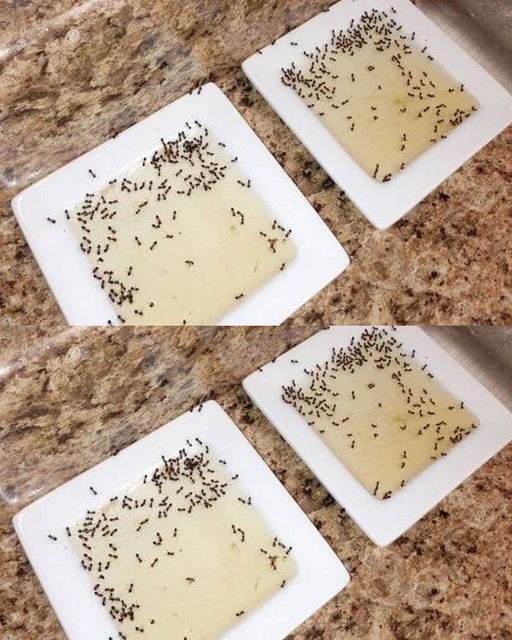ADVERTISEMENT
By eliminating easy access to food, you’ll make your home less appealing to ants.
### 2. **Seal Entry Points**
Ants are experts at finding entry points into your home. They can sneak through even the smallest cracks and gaps in windows, doors, or walls. To discourage ants from coming inside, it’s important to seal off these potential entry points.
– **Inspect windows and doors:** Look for any gaps or cracks around windows and doors. Use weatherstripping or caulk to seal these areas.
– **Check the foundation:** Inspect the foundation of your home for cracks. If you find any, seal them with caulk or a similar sealant to block the ants’ path.
By blocking their access points, you’ll make it much harder for ants to get inside in the first place.
### 3. **Use Ant Deterrents**
Certain smells and substances can repel ants without harming them. You can use natural deterrents to create a barrier that ants won’t want to cross. Here are some common natural ant repellents:
– **Vinegar:** Ants dislike the strong smell of vinegar. Mix equal parts water and vinegar in a spray bottle and use it to wipe down surfaces or spray entry points.
– **Cinnamon:** Sprinkle ground cinnamon around entry points or anywhere you’ve seen ants. Ants avoid cinnamon, and it also has a pleasant smell for us!
– **Lemon:** Ants don’t like citrus, so squeeze some fresh lemon juice around windows, doors, or other entry points. You can also use lemon peels to deter them.
– **Peppermint oil:** Ants find peppermint oil to be a natural repellent. Mix 10–20 drops of peppermint essential oil with water in a spray bottle and spray it around areas where ants are entering.
These natural deterrents can help create a barrier that keeps ants away, without the use of harsh chemicals.
### 4. **Use Ant Baits**
If you’re dealing with an ant infestation, using ant baits can be an effective way to get rid of them. Ant baits contain a poison that worker ants carry back to the colony, effectively killing the queen and eliminating the source of the infestation.
– **Place the baits near ant trails:** Place ant bait stations near the areas where ants are active, such as near food sources or entry points.
– **Be patient:** It may take a few days or even weeks for the ants to carry the bait back to the colony, but over time, it can effectively eliminate the entire colony.
Remember to keep baits out of reach of children or pets to avoid accidental ingestion.
### 5. **Diatomaceous Earth**
Diatomaceous earth (DE) is a natural, non-toxic substance that works wonders for getting rid of ants and other pests. It’s made from fossilized remains of tiny aquatic organisms called diatoms, and it’s harmless to humans and pets but deadly to insects.
– **Sprinkle DE around ant trails:** Dust a thin layer of food-grade diatomaceous earth around the areas where you’ve seen ants, such as windowsills, doors, and the edges of your kitchen.
– **Reapply as needed:** DE loses its effectiveness when it gets wet, so reapply it after cleaning or if you notice ants coming back.
DE works by dehydrating insects, and it’s highly effective at getting rid of ants, roaches, and other pests.
### 6. **Create a Barrier with Chalk or Baby Powder**
Ants dislike walking across powdery surfaces, which is why chalk and baby powder can be useful tools for discouraging their movement. Simply draw a line of chalk or sprinkle baby powder around entry points and areas where ants are coming inside.
– **Draw chalk lines at entry points:** Ants will avoid crossing the chalk lines, preventing them from entering your home.
– **Sprinkle baby powder around windows and doors:** Baby powder creates an inhospitable surface for ants, so sprinkling it around your home can keep them at bay.
This method is simple, cheap, and effective, especially for smaller ant problems.
### 7. **Baking Soda and Powdered Sugar Trap**
This homemade trap is a simple yet effective solution for getting rid of ants. The baking soda and powdered sugar mixture attracts ants, and when they consume it, the baking soda disrupts their digestive system and kills them.
– **Mix equal parts powdered sugar and baking soda:** Place the mixture in small containers or on a piece of parchment paper near ant trails.
– **Check regularly:** Replace the mixture as needed, especially if it gets wet or starts to lose its effectiveness.
While this method may not be a fast fix, it can be very effective for smaller ant problems over time.
### 8. **Call in a Professional**
If you’ve tried everything and the ants keep coming back, it may be time to call in a pest control professional. Sometimes, the problem may be too large or deeply embedded in your home, and a professional will have the tools and expertise to tackle it.
– **Professional pest control:** A licensed pest control technician can identify the type of ants invading your home and implement a long-term strategy to eliminate them.
– **Ongoing prevention:** A pest control service can also offer advice on how to prevent future infestations and keep your home ant-free.
### Conclusion: Take Action Against Ants
While ants are tiny creatures, they can be a big problem when they invade your space. The good news is that there are many natural, safe, and effective ways to discourage ants from making your home their own. From keeping your space clean and sealing entry points to using natural repellents and traps, there’s a solution for every type of ant problem.
By taking action early and using a combination of methods, you can keep ants at bay and enjoy an ant-free home. Say goodbye to those pesky invaders and reclaim your space with these simple strategies!
ADVERTISEMENT
